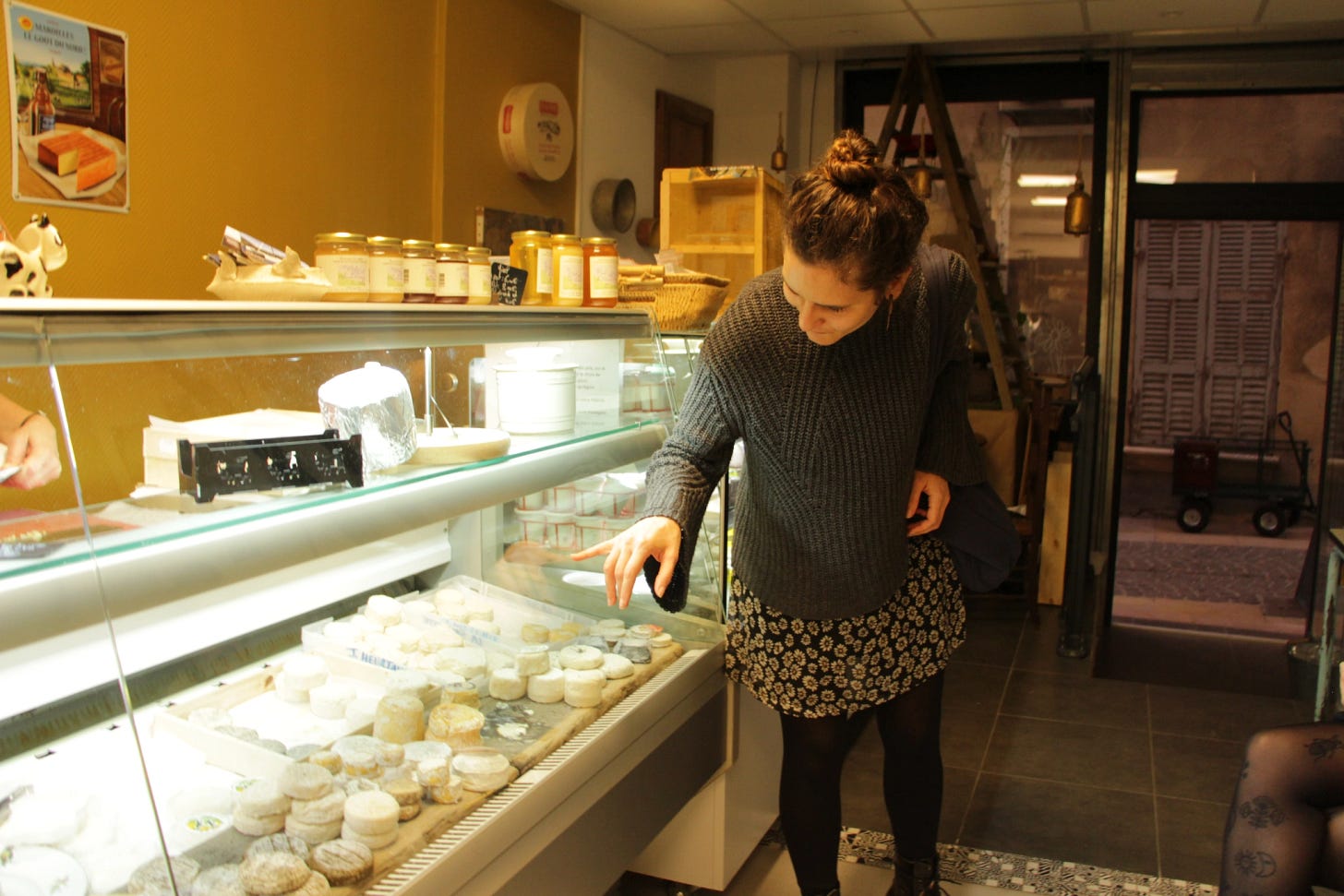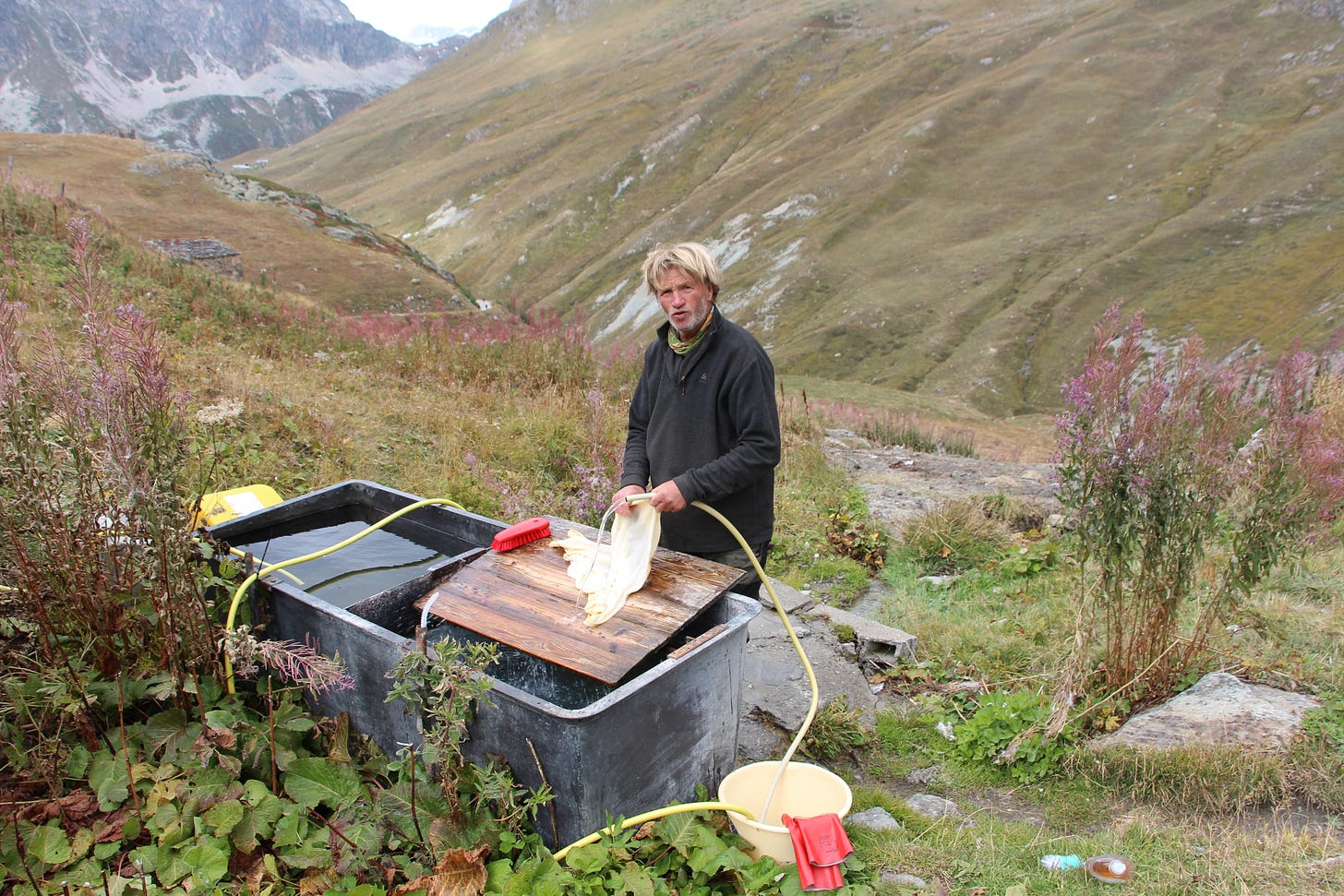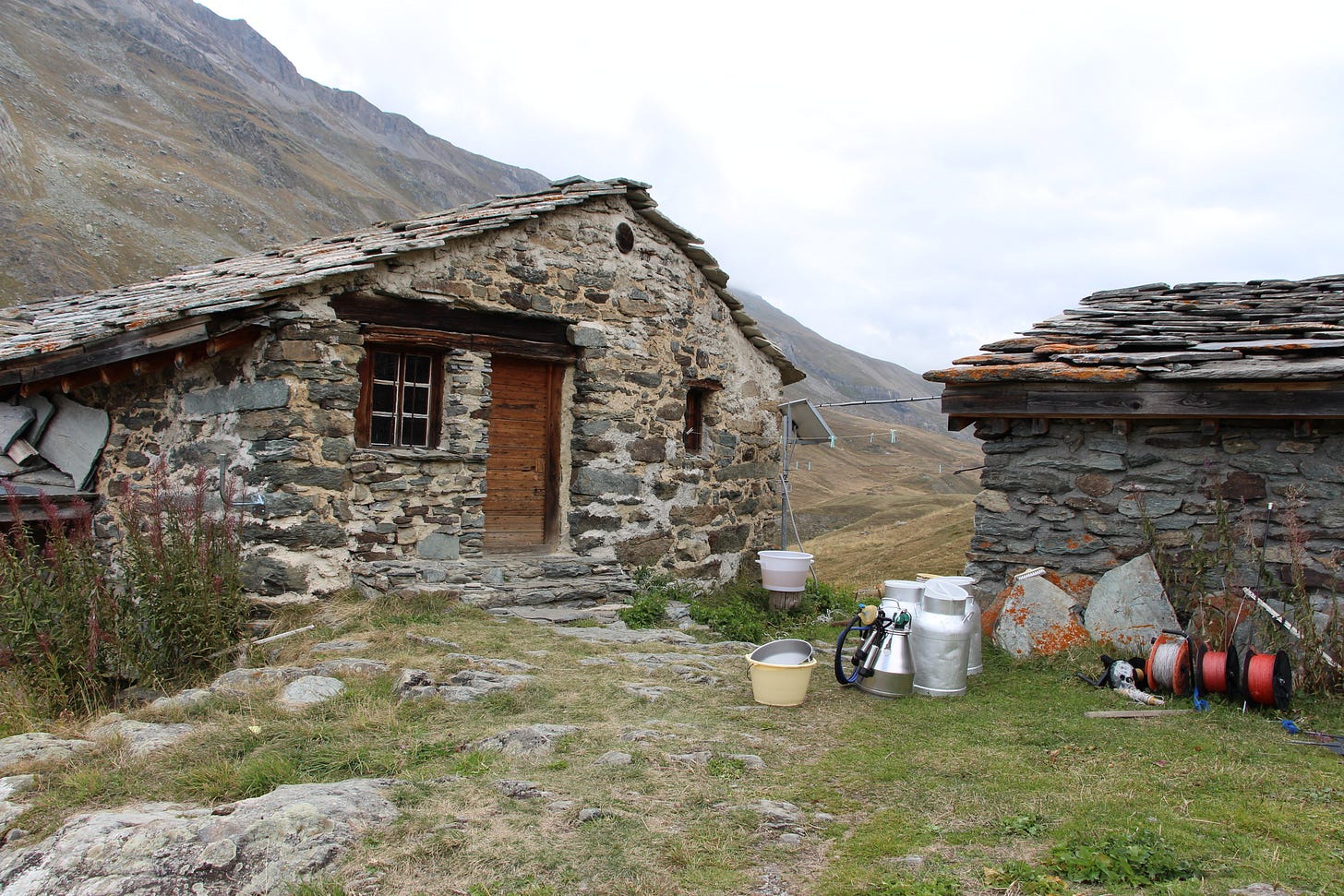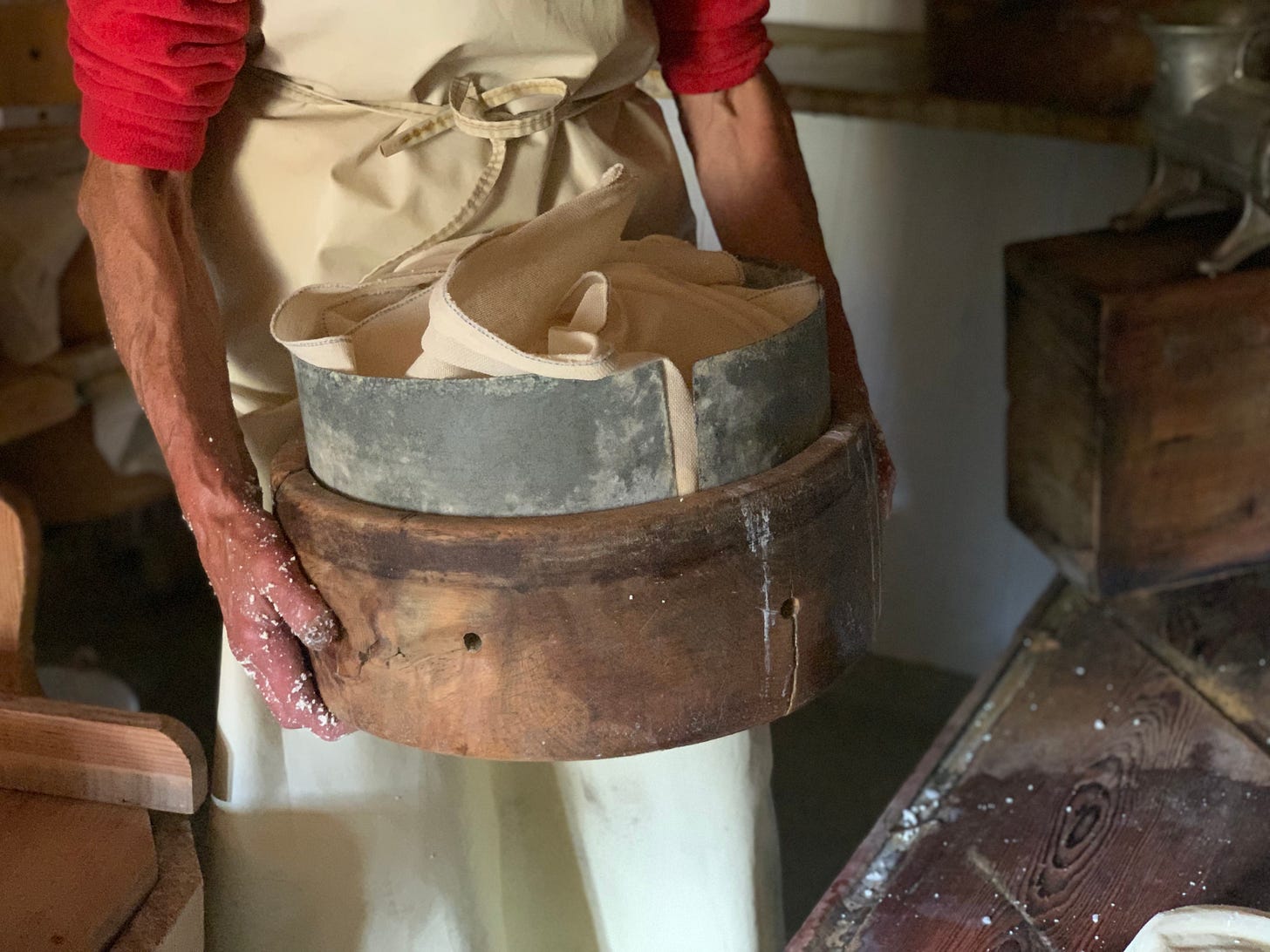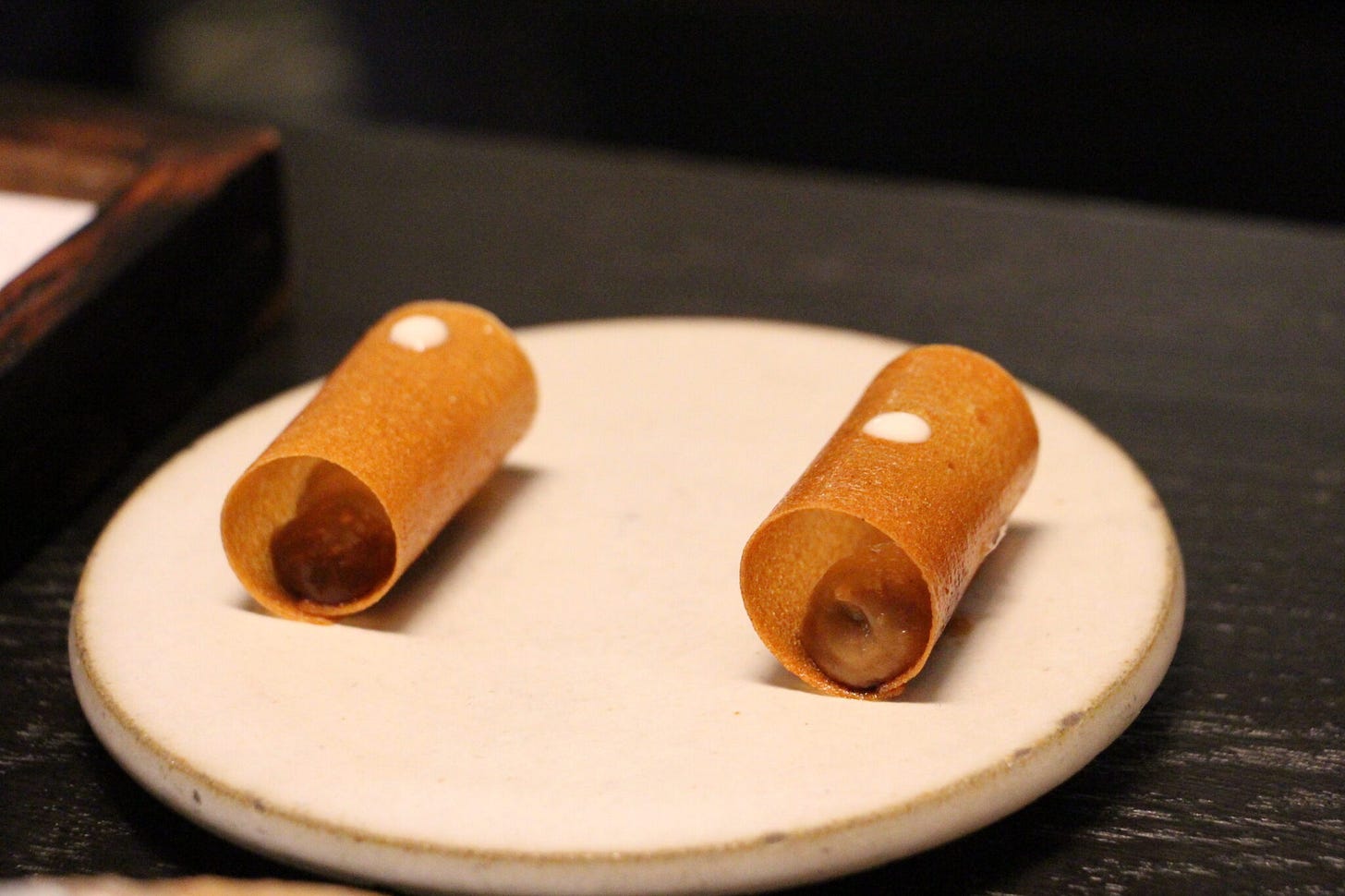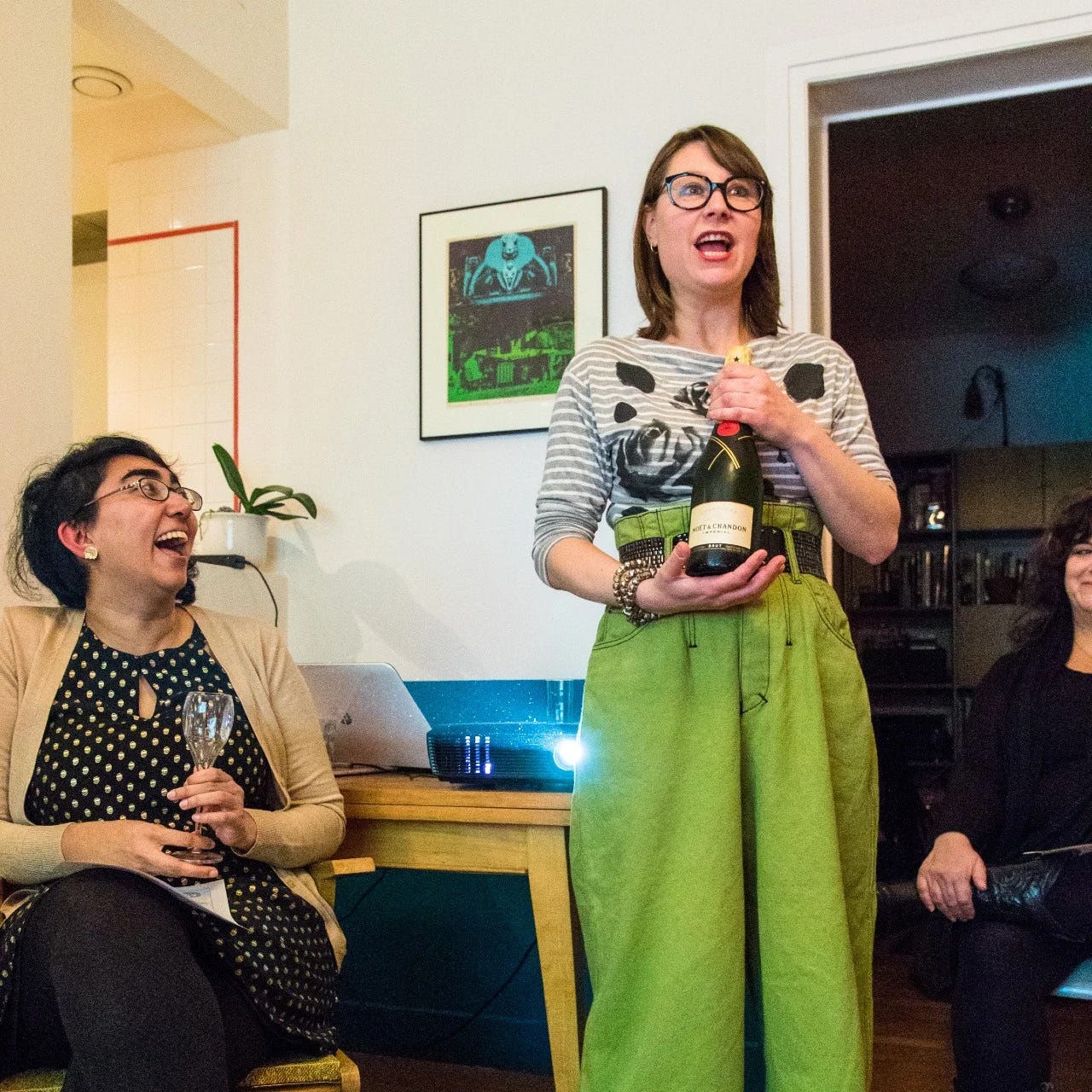I had been living in Paris on and off (but mostly on) for seven years before I started working, in earnest, as a tour guide. I credit this job with reigniting my love for a city that had, bit by bit, stopped being ***Paris*** and started being the place where I did my laundry, faced off with fonctionnaires, and crammed myself onto buses where, more often than not, my view was of someone else’s armpit.
Over a decade later, guiding has revealed other benefits, too. I spend time with total strangers two to three hours several times a week, and yet, united by our shared passions for food, history, and French culture, small talk is completely off the table. As a result, I often get asked questions that open my eyes to new discoveries – not just about France, but also about myself. One of the most frequent?
Why cheese?
“Why not?” I often want to say, though I don't, because while the answer is a long one, I think it’s a story worth telling.
The first part of the answer comes from my very first trip to Paris, when I was 10 years old, accompanying my dad on a business trip. We had lunch at the Jules Verne, and when the cheese cart came around, he quickly told the server that we’d take anything “really stinky.” My heart was won over by the very first taste of Epoisses.
But that was just the beginning.
When I moved to Paris nine years later, I knew that I wanted to become as ensconced in French culture as possible. (At the time, I told myself I'd refuse to have English-speaking friends. I’m so glad I was wrong about that one.) Still, I knew I needed an inroad, and gastronomy seemed like the prime candidate. I’d learned much more French at the dinner table of my host family in the North, where I lived for three months when I was 14, than I ever did in a classroom. Gastronomy seemed to be the common language of France, and with so much diversity across the country, it seemed that the best way for me to gain access to both culture and regionality was to specialize in something seeped in terroir.
Naturally, I assumed that would be wine. I was very quickly put in my place.
At 19, I knew absolutely nothing about wine, and the barrier to entry felt enormous. Industry pros struck me as gatekeepy, and after a few embarrassing encounters, asking questions that left me feeling stupid and childish, I changed tacks, gravitating towards my first love: cheese. (It’s worth noting that wine is evolving, and while my “welcome” is still par for the course in some parts of the sector, this isn't so everywhere.)
The cheese world, however, was warm for the start. Cheesemongers and makers were open, to (if a bit confused by) my interested questions. And more often than not, after a brief discussion, their passion would burble out of them. I’d come away from each interaction with my initial questions answered… and a whole host of new ones to ask, next time. Cheese, I discovered, was just as rooted in terroir, if not more so, than wine, and each of the hundreds of cheeses made across France revealed its own history and flavors. And cheese people, I found, were just as wonderfully weird as I was – and still am.
While the flavors of cheese certainly still motivate me to do what I do, these days, my love of cheese is far more about the people behind it. I've had the pride and pleasure of sharing the stories of Charlotte Salat, the industrious cheesemaker who managed to land on her feet when she was ejected from her AOP. I’ve dived deep into the murky waters of the regulations surrounding Camembert – and the small producers fighting back. I’ve profiled the father-sons team behind one of the nation’s best Chavignols and the sisters whose children are now taking over the Vosgian family farm where generations have crafted Munster.
Telling these stories takes me to the remotest corners of France, where I’m usually met with a strange marriage of welcome and bemusement. These producers generally find it odd that I – an American from New York living in Paris – would be in any way interested in the techniques that go into their craft. Sometimes, I’m able to convey what I find so fascinating. Often, they just shrug and let me get on with it, an oddity they can't quite understand but tolerate.
One of the stories I’m proudest of is also one of my most recent: a deep dive into France’s rarest blue cheese – bleu de Termignon. This rustic, rugged, cheddar-like cheese is made in the remote Parc de la Vanoise, in Savoie, and today, just four producers are still making it.
Seeing as cell service doesn't reach the rustic chalets where it’s made, it took every dogged bone in my body to bring this story to life. I’m not too proud to admit I harassed the cheesemakers and agers carrying on this tradition, calling them constantly in the weeks before the season’s end until the ultimate, euphoric oui. When I finally made it to the region, in September of last year, master ager Bertrand Paccard eyed me warily as he shook my hand. He made no secret of his irritation, but there was a glint of admiration, too, as he told me, “At least you get what you want.”
I shrugged, batted away what might have been a compliment. Le métier l’oblige, I said, “The job demands it.” I like to think it was because he warmed to me enough that he informed me, then, that I was not the most annoying journalist he’d ever met. Il y a plus casse-tête que vous, he assured me.
And while I’m sorry to have troubled these folks with my endless calls, when I finall reached the rustic park, hiking my way past the gorgeous russet cattle to witness the cheese being made, to speak with these tireless farmers, to share their story, it embedded itself in me: a permanent, life-changing memory. And having cheesemaker Catherine Richard finally soften enough, after an afternoon spent together, to tell me that if she’d known how I really was, who I really was, she’d have invited me to spend the night… well, that made it all worth it.
Cheese of the Week
Bleu de Termignon is a naturally-veined blue cheese and the rarest in all of France. It’s made by just four producers in the Vanoise Massif, part of the Alps. Unlike most other blue cheeses, the blue veining in Bleu de Termignon is entirely spontaneous, paving the way for a relatively mild-mannered blue that has flavors more similar to other uncooked pressed cheeses like Salers – or other spontaneous blues like Castelmagno in Italy. Depending on the producer, Bleu de Termignon may be more crumbly or creamier. What unites them is their faint cellary bitterness and touch of barnyardy funk.
To discover more of my favorite cheeses, be sure to follow me on Instagram @emily_in_france, subscribe to my YouTube channel, and tune into the Terroir Podcast, where Caroline Conner and I delve into France's cheese, wine, and more one region at a time.
What I’m Eating
Stalwartly locavore, 1-Michelin-star FIEF prides itself on sourcing all of its ingredients from the hexagon – which means no coffee, no chocolate, and no vanilla. Instead Chef Victor Mercier takes full advantage of the bounty of France’s terroir to craft a tasting menu featuring surprising and audacious flavor combos, most of which take inspiration from French classics with a slight Asian twist. I was drawn here by the fact that it offers a vegetarian version of its multi-course tasting menu, and while that option offered a fair number of stumbles, the meat options were pitch perfect. More on the blog.
Where I’m Going
To Lyon, where I’m developing a new, secret project I cannot wait to share with you all!
What I’m Doing
Most of my food tours are geared towards visitors to Paris, but Paris residents can now take full advantage of all the cheesy knowledge I’ve racked up over the years thanks to a new cheese-tasting event I’m hosting in my favorite covered market in Paris!
The first event will be taking place May 21 at 6pm and will feature five phenomenal French cheeses paired with a glass of grower Champagne. Over the course of the 1 1/2-hour tasting, you’ll discover the stories of these iconic cheeses – and hopefully discover some new favorites.
Tickets are available online. We're voluntarily keeping the group small, but we still have a couple of spots left!
TERRE/MER is a ceramics and culinary retreat I co-host in the Mediterranean seaside town of la Ciotat. This long weekend is governed by creativity and terroir, encompassing a 10-hour ceramics workshop, three locally-sourced meals a day (prepared with love by yours truly), hands-on cooking workshops, a cheese tasting (bien sûr), and more.
We'll be welcoming our next small group September 4-7. Book your spot now!
What I'm Writing
1. The Auvergne is home to 80 dormant volcanoes and five AOP cheeses – and that’s just the beginning of the local bounty. Here are the 10 Auvergnat cheeses you need to try. For Culture.
2. RFK Jr. is pushing to have fluoride removed from our drinking water, and some states are following suit. But what are the consequences for our dental health? For Organic Authority.
3. From the archives: How summer road-trippers put a southern French sweet on the map. For Atlas Obscura.
Friends of Emily in France
I’m surrounded by some pretty exceptional entrepreneurs, writers, and tastemakers, and I think you should know about them too! From now on, each week, I’ll be profiling one person I think you should be aware of.
A food-focused summer camp for adults sounds a bit like something I’d dream of if I’d gone to bed after eating too much cheese, and yet this is no dream: Food & Culture of France is an immersive dive into gastronomy, culture, history, and art hosted by Dr. Jack Butt, Professor Emeritus of History at James Madison University, and Allison Zinder, a passionate gastronomy guide and one of my dearest friends.
As part of a small group of curious travelers, you will taste your way through Paris’ most venerable food institutions and discover the history of the ingredients, marketplaces, restaurants, and iconic dishes that make up the French dining experience. The next session is taking place September 21 to October 2nd, and you can book now!
From the New York Times bestselling author of The Paris Library and Miss Morgan's Book Brigade (and my dear, dear friend) comes this multi-cast audiobook following a young woman from Montana who lands a job in the American Library in Paris. I have long loved Janet Skeslien Charles’ books, which are united by casts of strong characters facing impossible odds with bravery, heart, and a dose of human imperfection. Her new atypical love story delves deep into best-friendship and self discovery, generously seasoned with a palpable love of books. Anyone who's read her previous two novels will love re-encountering some familiar faces and places, and anyone who loves Paris will surely delight in its description of the most romantic city in the world.
The Parisian Chapter is currently available for pre-order. I highly recommend you grab it now for summer commutes!
FAQs
With the goal of bringing you the content you crave, I'm soliciting your help. What questions can I answer for you? Drop them into the newsletter chat, and I’ll answer as many as I can!
What I'm Reading
1. What Wild Women Do transported me to my beloved Adirondacks, at one of the “great camps” my mother’s family has been going to for four generations. It was, in fact, the setting of this book that I found most engaging, though the two-pronged storyline vascillating between past and present has its merits. I found myself far more drawn in by the '70s setting and would have liked to linger even more with revolutionary, feminist Eddie. I did, nevertheless, find contemporary Rowan sympathetic and easy to identify with, especially given her challenges: self-doubt, being with the wrong person, artistic drive stymied by market demand. There was, nevertheless, ultimately something a bit shallow about the world-building, with secondary characters who feel a bit like silhouettes rather than fully-formed people. But this is absolutely a pleasant, engaging book to read.
2. This astounding, beautiful interview with Jamaica Kincaid, an author I have not read, but given the clear-eyed way with which she engages with her own work, I’m putting her on my list immediately. In Salon.
3. This love letter to simple cheeses. In Milk Trekker.
A bientôt !




